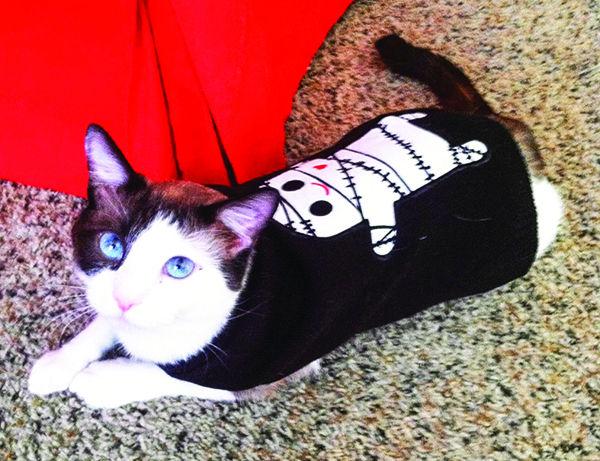Halloween gives pet owners the opportunity to dress dachsunds as hot dogs and cats as superheroes, and the Texas A&M College of Veterinary Medicine and Biomedical Sciences encourages pet owners to keep the safety of their four-legged companions in mind when picking out the perfect Halloween costume.
Stacy Eckman, clinical assistant professor at the Texas A&M College of Veterinary Medicine and Biomedical Sciences, said one of the concerns when picking out Halloween costumes for pets should be ensuring the pet can breathe in the costume.
“You have to be extremely careful with masks and elastic bands,” Eckman said. “A lot of these costumes come with those things and we discourage them. It can obstruct their breathing or strangle them when they’re unattended.”
In addition to breathing hazards, Eckman said to avoid costumes that could trip the animal.
“Perhaps the biggest is getting something that won’t drag on the ground because it creates a tripping hazard that can be potentially dangerous,” Eckman said. “I think that’s one of the most common mistakes.”
Eckman said while pet safety awareness is always of importance, the veterinary medicine college takes several measures toward promoting safety awareness for pets at this time of year.
“I think one of the best ways we get the word out is through our website and social media — we have a blog with tips to pet safety for Halloween,” Eckman said. “One of our doctors was actually on KBTX Monday morning talking about safety when it comes to candy on Halloween, specifically chocolate. So we do our best to get the word out as best we can.”
Danielle Barningham, clinic manager at Banfield Pet Hospital, said the clinic sends out a newsletter with pet safety tips around this time of year.
“We hope that it will keep the animals safe for every season, not just Halloween,” Barningham said.
Josh Flores, chemical engineering junior, said pets have different preferences when it comes to clothing. Flores said he made sure his dog’s specific preferences are taken into consideration when choosing his Halloween costume.
“I would look into where the costume is on his body and how it attaches to him,” Flores said. “I don’t want anything to block his vision or impair him. Also, I know Colt doesn’t really like things around his neck besides his collar, so it would probably have to attach around his torso or something.”
Vets urge safe pet costume choices
October 27, 2014

Katy Stapp — THE BATTALION
0
Donate to The Battalion
$1765
$5000
Contributed
Our Goal
Your donation will support the student journalists of Texas A&M University - College Station. Your contribution will allow us to purchase equipment and cover our annual website hosting costs, in addition to paying freelance staffers for their work, travel costs for coverage and more!
More to Discover









